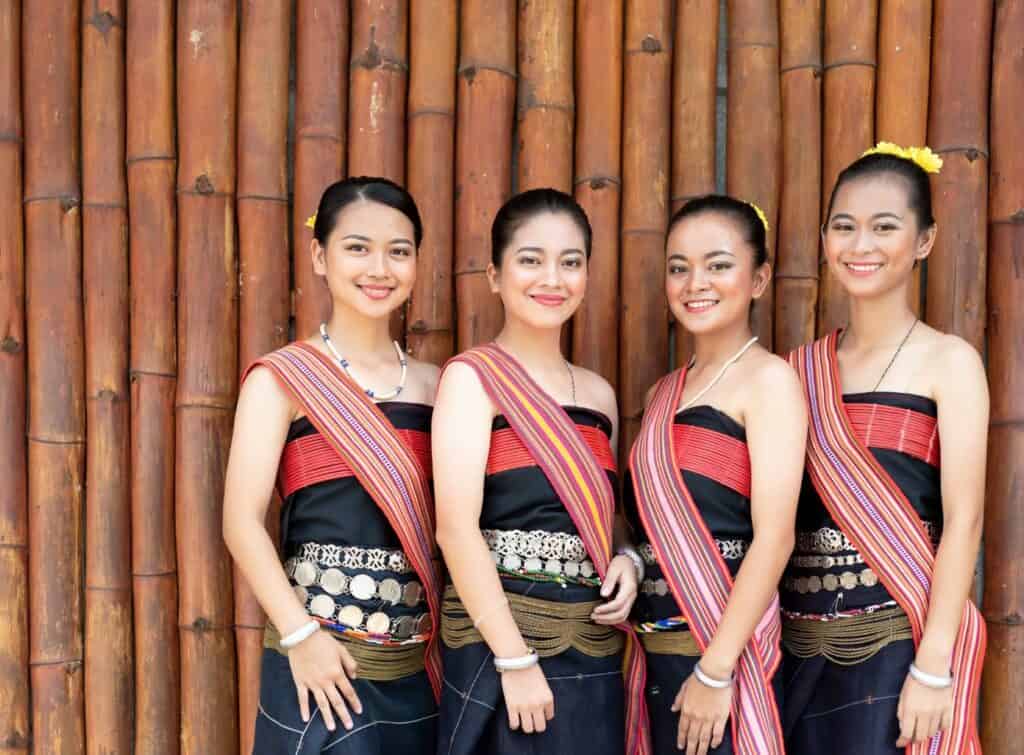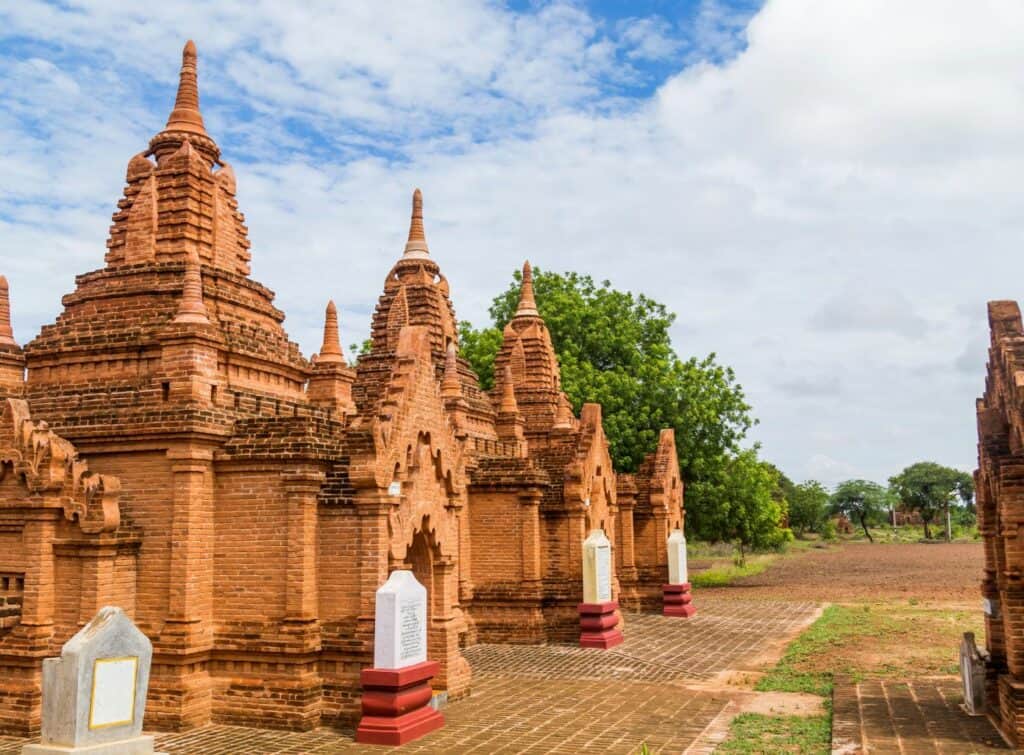Southeast Asia is known for its rich cultural diversity and vibrant landscapes. Whether you’re exploring bustling cities, tranquil beaches, or ancient temples, it’s important to dress appropriately to show respect for the local culture and traditions. In this guide, we’ll delve into the cultural norms of Southeast Asia, provide practical clothing tips, and offer country-specific attire guidelines. So, let’s dive in and learn about what to wear in this fascinating region.
Understanding Southeast Asia’s Cultural Norms

When it comes to dressing in Southeast Asia, it’s crucial to grasp the importance of respecting cultural norms. The region is home to various religions, including Buddhism, Islam, Hinduism, and Christianity, each with its own set of beliefs and practices. Dressing respectfully shows appreciation for these customs and helps you blend in with the locals.
The Importance of Dressing Respectfully
In Southeast Asian countries, modesty is highly valued. It’s essential to avoid revealing clothing such as low-cut tops, short shorts, and miniskirts. Instead, opt for clothing that covers your shoulders, chest, and knees. Not only will this demonstrate cultural awareness, but it will also protect you from the sun and mosquito bites.
Moreover, dressing respectfully in Southeast Asia goes beyond just adhering to societal norms. It is a way to show respect for the local culture and traditions. By dressing modestly, you are acknowledging the values and beliefs of the people you encounter, fostering a sense of mutual understanding and appreciation.
Furthermore, dressing respectfully can also enhance your overall experience in Southeast Asia. When you dress in a way that is culturally appropriate, you are more likely to be welcomed and accepted by the locals. This can lead to meaningful interactions and opportunities to learn about the rich history and traditions of the region.
Religion and Dress Code in Southeast Asia
Religion plays a significant role in shaping dress codes throughout Southeast Asia. For example, in predominantly Buddhist countries like Thailand, it’s customary to dress respectfully when visiting temples. This includes wearing long pants or skirts and covering your shoulders with a shawl or scarf. The emphasis on modesty in Buddhist culture reflects the belief in maintaining inner peace and tranquility.
Similarly, in Muslim-majority countries like Indonesia and Malaysia, it’s important to dress modestly, with women covering their heads, shoulders, and knees. This adherence to modesty is rooted in Islamic teachings, which emphasize the importance of modesty as a means of preserving one’s dignity and respecting the boundaries of others.
It is worth noting that while there are general guidelines for dressing respectfully in Southeast Asia, there may be variations within each country and even within different regions. For example, in urban areas, the dress code may be more relaxed compared to rural areas where traditional customs are more strictly followed. It is always a good idea to research and be aware of the specific cultural norms of the place you are visiting to ensure that you dress appropriately and respectfully.
In conclusion, understanding and respecting Southeast Asia’s cultural norms when it comes to dressing is essential for any traveler. By dressing modestly and adhering to the local customs, you not only show respect for the traditions and beliefs of the region but also enhance your overall experience by fostering meaningful connections with the local community.

General Clothing Tips for Traveling in Southeast Asia
Now that you understand the cultural norms, let’s dive into some practical tips for your Southeast Asia wardrobe.
Weather Considerations for Your Wardrobe
Southeast Asia’s climate is generally hot and humid. Lightweight, breathable fabrics are your best friends in such conditions. Choose clothing made from natural fibers like cotton and linen, as they allow air to circulate and help keep you cool. Additionally, consider packing a hat, sunglasses, and a lightweight rain jacket for unexpected downpours.
Choosing the Right Fabrics
Aside from considering the weather, it’s worth noting that certain fabrics fare better in Southeast Asia’s humidity than others. Avoid synthetic materials that trap heat and moisture, causing discomfort. Opt for breathable fabrics that dry quickly, like cotton and linen, to stay comfortable throughout your journey.
Country-Specific Attire Guidelines
Each Southeast Asian country has its own unique cultural heritage and dress norms. Here are some country-specific guidelines to keep in mind.
What to Wear in Thailand
Thailand is known for its beautiful temples and tropical beaches. When visiting temples, both men and women should cover their shoulders and legs. Sarongs and shawls are handy for this purpose. On the beach, lighter clothing and swimwear are acceptable, but topless sunbathing is not allowed.
Dressing Appropriately in Vietnam
Vietnam is a country with a distinct fashion sense. The traditional ao dai, a long tunic worn over wide-leg pants, is a common sight. While visiting temples or important landmarks, it’s essential to dress modestly. Avoid wearing revealing clothing and remember to remove your shoes before entering religious sites.
Clothing Recommendations for Indonesia
Indonesia is home to a diverse population and a variety of customs. In predominantly Muslim areas, such as Bali, it’s considered respectful to dress modestly. Women should cover their shoulders and legs, while men should avoid wearing shorts when entering religious sites. On the beach, swimwear is acceptable, but it’s best to avoid overly revealing bikinis.
Special Occasions and Ceremonies in Southeast Asia
If you have the opportunity to attend a traditional wedding or participate in religious festivals during your visit to Southeast Asia, it’s essential to dress appropriately.
Attending a Traditional Wedding
In Southeast Asia, traditional weddings are often elaborate affairs filled with cultural customs. Guests are expected to dress formally, often in traditional attire if available. Men typically wear suits or traditional outfits, while women choose elegant dresses or traditional clothing, depending on the culture of the hosts.
Participating in Religious Festivals
Religious festivals, such as Songkran in Thailand or Hari Raya Aidilfitri in Malaysia, are celebrated with much enthusiasm throughout Southeast Asia. When attending these festivals, it’s best to choose lightweight and colorful clothing. Comfortable shoes are also recommended, as you may be walking or dancing for long periods.
Practical Tips for Packing Your Suitcase
Finally, let’s discuss some practical tips for packing your suitcase when preparing for your Southeast Asia adventure.
Essential Items to Pack
While the exact contents of your suitcase will depend on the duration and nature of your trip, here are some essential items to consider. First and foremost, pack lightweight, breathable clothing that can be layered. Don’t forget to bring a comfortable pair of walking shoes, a hat, sunglasses, and a reusable water bottle. It’s also advisable to pack a lightweight scarf or sarong for temple visits and to protect yourself from the sun.
Balancing Comfort and Respect in Your Attire Choices
As you plan your outfits for your Southeast Asia trip, it’s essential to strike a balance between comfort and respect. While it’s crucial to dress appropriately and abide by cultural norms, it’s equally important to wear clothing that allows you to explore comfortably. Embrace lightweight and breathable fabrics that keep you cool and adapt to changing weather conditions.
By following these guidelines, you’ll not only blend in seamlessly with the locals, but you’ll also have a more enriching and respectful experience in Southeast Asia. So, pack your suitcase wisely and get ready to embark on a memorable journey through this mesmerizing region!

